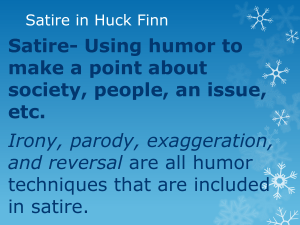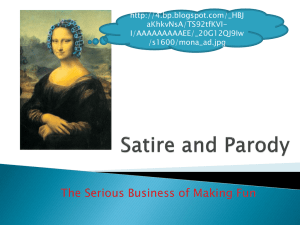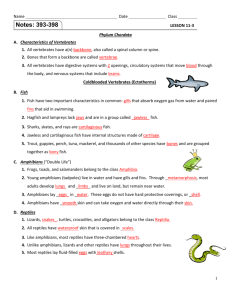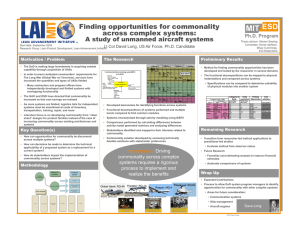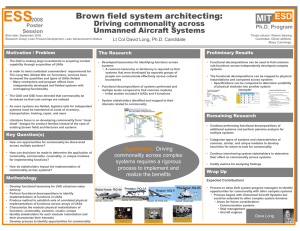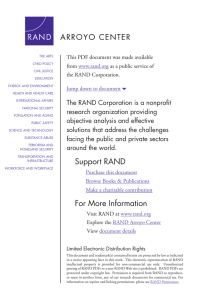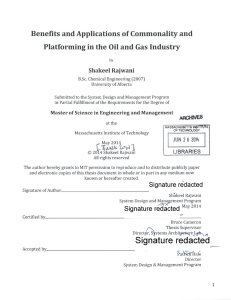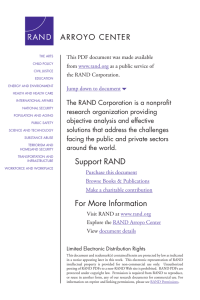Critical Thinking Activities
advertisement
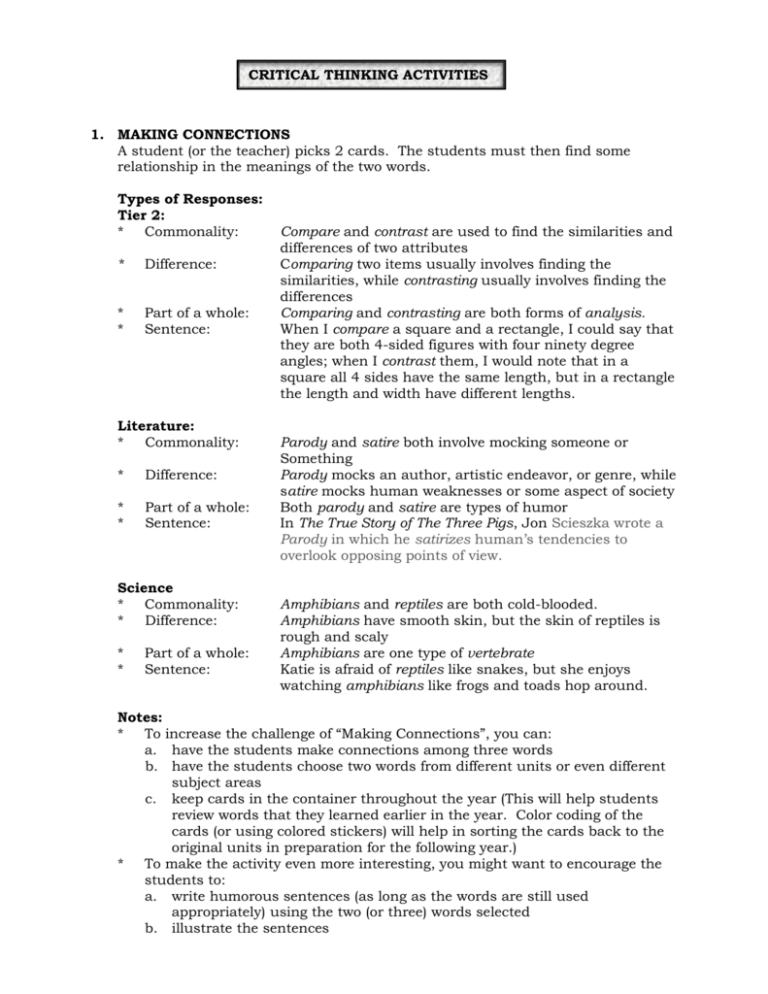
CRITICAL THINKING ACTIVITIES 1. MAKING CONNECTIONS A student (or the teacher) picks 2 cards. The students must then find some relationship in the meanings of the two words. Types of Responses: Tier 2: * Commonality: * Difference: * * Part of a whole: Sentence: Literature: * Commonality: * Difference: * * Part of a whole: Sentence: Science * Commonality: * Difference: * * Part of a whole: Sentence: Compare and contrast are used to find the similarities and differences of two attributes Comparing two items usually involves finding the similarities, while contrasting usually involves finding the differences Comparing and contrasting are both forms of analysis. When I compare a square and a rectangle, I could say that they are both 4-sided figures with four ninety degree angles; when I contrast them, I would note that in a square all 4 sides have the same length, but in a rectangle the length and width have different lengths. Parody and satire both involve mocking someone or Something Parody mocks an author, artistic endeavor, or genre, while satire mocks human weaknesses or some aspect of society Both parody and satire are types of humor In The True Story of The Three Pigs, Jon Scieszka wrote a Parody in which he satirizes human’s tendencies to overlook opposing points of view. Amphibians and reptiles are both cold-blooded. Amphibians have smooth skin, but the skin of reptiles is rough and scaly Amphibians are one type of vertebrate Katie is afraid of reptiles like snakes, but she enjoys watching amphibians like frogs and toads hop around. Notes: * To increase the challenge of “Making Connections”, you can: a. have the students make connections among three words b. have the students choose two words from different units or even different subject areas c. keep cards in the container throughout the year (This will help students review words that they learned earlier in the year. Color coding of the cards (or using colored stickers) will help in sorting the cards back to the original units in preparation for the following year.) * To make the activity even more interesting, you might want to encourage the students to: a. write humorous sentences (as long as the words are still used appropriately) using the two (or three) words selected b. illustrate the sentences 2. CATEGORIZING List 4 vocabulary words that have something in common on an index card. (The commonality should relate to the meaning of the word --- not what letter it starts with, etc.) The students have to figure out what the words have in common. (The answers can be written on the back of each card or the cards can be numbered and an answer key can be made.) Tier 2: Math: Language Arts: Social Studies: assess, check, critique, judge (all refer to the process of evaluation) cube, sphere, cone, prism (all are 3-dimensional shapes) abstract, concrete, proper, common (all are types of nouns) strait, bay, fjord, gulf (all are bodies of water) Extension: Advanced students should be encouraged to create the groupings. After being checked by the teacher, other students can figure them out. 3. ODD ONE OUT The teacher writes 5 vocabulary words on an index card. Four of the words should have something in common; the fifth word should not fit with the others. Students have to figure out which word doesn’t belong and explain why. Tier 2: hypothesize, conjecture, predict, verify, estimate verify --- the others all involve a lack of certainty Math: product, factor, sum, quotient, difference (factor --- the others are all the answer to a mathematical operation) Social Studies: pursuer, abolitionist, fugitive, suffragette, overseer (suffragette --- the others all had something to do with slavery) Science: oxygen, hydrogen, nitrogen, carbon, chlorine (carbon --- the rest are gases at room temperature) Extension: Advanced students should be encouraged to create the groupings. After being checked by the teacher, other students can figure them out. 4. ANALOGIES Analogies are an excellent way to help students think about the relationships among the various vocabulary words. When writing analogies, the word that fits on the blank should be a vocabulary word. To make the analogies more challenging, any or all of the other words can also be vocabulary words. Tier 2: Math: Literature: Science: Social Studies: paraphrase: own words :: __________________: copied words (plagiarize) ten: one hundred :: _______________: century (decade) climax: conclusion :: denouement: _______________ (resolution) symbol: element :: _______________: compound (formula) Senator: legislative branch :: President: _______________ (Executive branch)


